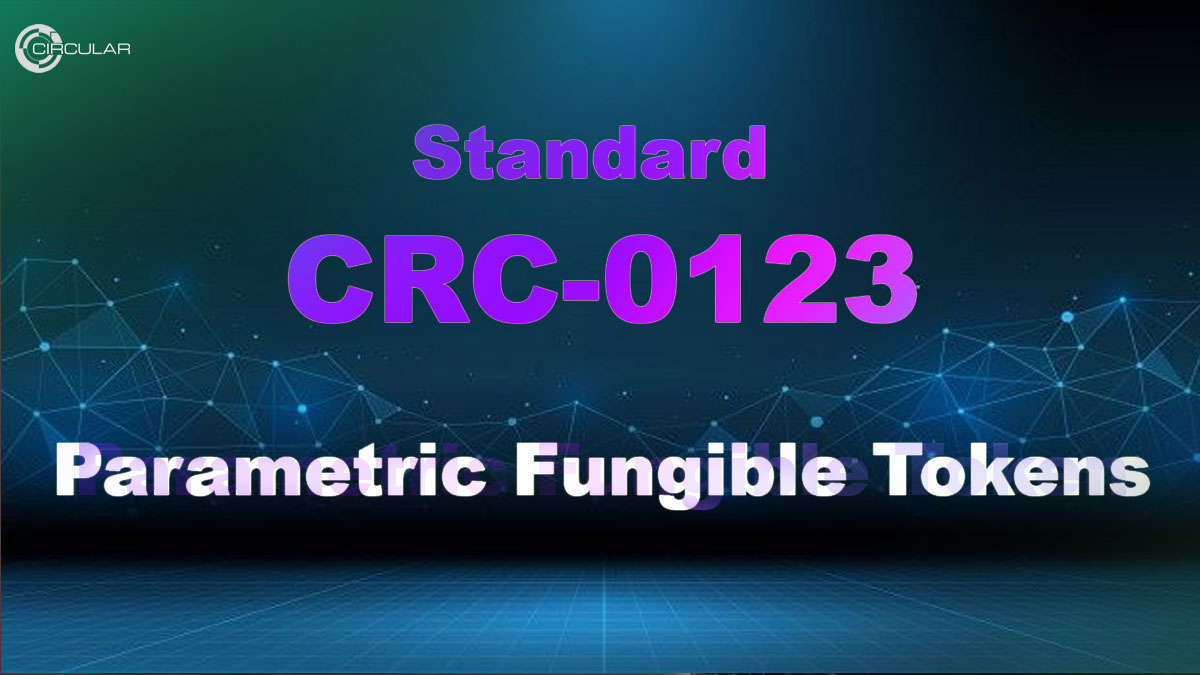Back To Blog
154 Total Views
Boston 04/04/2024
CRC-0123 Standard: Parametric Fungible Tokens
By Gianluca De Novi, PhD

Join us on social networks
What
In the swiftly evolving realm of the blockchain industry, the proliferation of smart contracts has marked a significant milestone in digital asset management. Yet, this advancement prompts a crucial inquiry: Is the ubiquitous deployment of smart contracts truly the epitome of "smart" strategy? This question gains momentum upon realizing that an overwhelming 80% of smart contracts, particularly those governing digital assets, exhibit striking similarity. Such uniformity invites scrutiny over the computational pragmatism, security implications, and operational efficiency of employing smart contracts across the board.Smart contracts, in essence, are hailed for their capacity to encode complex and diverse functionalities, making them indispensable in scenarios that demand intricate algorithmic synthesis. However, the utility of deploying a unique smart contract for each asset becomes questionable when the functional dynamics of a vast array of assets are identical. This redundancy not only escalates computational overhead but also intensifies security vulnerabilities and system inefficiencies. The process involves not merely managing asset data but also entails loading extensive contract codes and their execution states on a virtual machine—often to run remarkably simplistic algorithms that are replicated across numerous instances.
The Ethereum ERC-20 contract serves as a prime example, where countless token projects alter only minimal parameters—such as token name, ticker, and supply—before launching what is essentially a clone of the existing contract. This practice underscores a glaring inefficiency within the current framework of smart contracts for digital asset management, necessitating a paradigm shift towards more streamlined methodologies.
How
The solution may lie in the integration of certain functionalities directly within the blockchain protocol, thereby significantly streamlining execution times, simplifying asset deployment, and markedly reducing costs. The challenge, as I perceive it, isn't solely about enhancing efficiency and sustainability but also about reimagining the foundational structures of our digital tools. Circular Protocol emerges as a vanguard in this regard, not only offering a robust smart contract architecture (Hyper Code) but also introducing standards that can serve as viable alternatives to conventional smart contracts. Among these, the CRC-0123 standard (Standard 01, Year 2023) represents a parametric fungible token, enabling their definition through a simplified form, akin to native tokens, sans the complexities of smart contract deployment(https://circularlabs.io/page?page=Transactions2).

Why
Why, then, might one opt for parametric tokens over their smart contract counterparts? The answer primarily hinges on cost-effectiveness. The financial outlay for launching a smart contract token encompasses not only minting and deployment expenses but also ancillary costs associated with additional contracts, development services, and potential audit fees. Moreover, smart contract-based tokens necessitate a degree of trust to ensure their integrity.Conversely, parametric tokens offer a cost-efficient alternative, characterized by fixed transaction fees, the absence of gas fees, and predictable, secure operations. Their governing algorithms are embedded within the network's code, eliminating the need for programming expertise in token deployment. Thus, parametric tokens not only democratize access to digital asset creation but also herald a new era of efficiency, security, and inclusivity in the blockchain domain. If you need a simple token that is easy and affordable to deploy and doesn't have any fancy functionalities (for example meme coins), parametric tokens are probably the best choice.
Gianluca De Novi, PhD is the founder of Circular Protocol, a faculty at the Harvard Medical School, Harvard Extension School and is Director of the Medical Device and Simulation at the Massachusetts General Brigham. He holds a Ph.D. in Robotics and Control systems from the University of Bologna (Italy) and is an expert in High Performance Computing and Blockchain Architecture. .
This article is for general information purposes and is not intended to be and should not be taken as legal or investment advice. The views, thoughts and opinions expressed here are the author's alone and do not necessarily reflect or represent the views and opinions of Circular Protocol.
#blockchain #web3 #DeFi #crypto #NFT #GameFi #coin #decentralization
Circular Protocol Blog-chain
OTHER READINGS
Advancing Blockchain Generations: A Journey of Innovation and Sustainability
Learn More

MediSim VR and Circular together for Health 3.0: medical education and treatments step up thanks to Virtual Reality and Blockchain
Learn More
Circular on Youtube
INFLUENCERS WE RECOMMEND


















